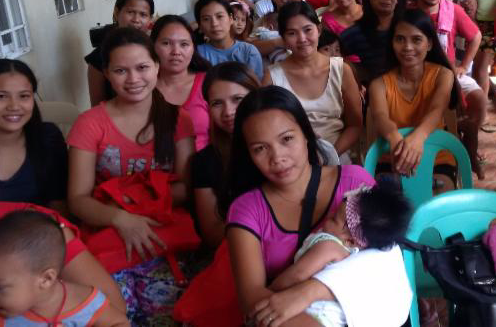April 2015 Newsletter
Dear friend of DKT:
Last month I visited DKT Mexico and was impressed by DKT’s commitment to reaching young people. The outreach team visits high school and college health fairs to promote information on contraceptives, and helps connect young adults to clinics near their school that support DKT products. They are also responding to teens’ questions on Facebook about contraceptive methods and have positioned themselves as experts in condoms, IUDs, and emergency contraception. IUDs are a new product for DKT Mexico, but they are already selling in significant quantities.
We share other highlights of youth engagement in this newsletter. You will also find an announcement for our 2015 annual report, a spotlight on DKT China, and an update on Phil Harvey’s recent endeavors.
As always, thank you for supporting DKT International.
Cheers,
Christopher Purdy
President
DKT International
Annual Report for 2015

In 2014, our 21 programs delivered 28.2 million couple years of protection, an increase of 19% over 2013. Our efforts averted an estimated 6.5 million unwanted pregnancies and 3.6 million abortions.
We are pleased to share DKT’s 2015 annual report, which highlights DKT’s 2014 performance results as well as 2013 financials. DKT provided 28.2 million couples with protection from unwanted pregnancy in 2014, marking our best year ever. Despite this achievement, we know there is much that remains to be done, which keeps us focused on our mission and the future. You can view and download the report here. We welcome your questions and feedback.
DKT’s Founder is “Fed Up”
Phil Harvey is as busy as ever. In addition to writing a book, continuing to contribute to DKT, and his work with the DKT Liberty Project, Phil has been recently featured for his contributions to social marketing and family planning. In a recent article in The Chronicle of Philanthropy entitled “Phil Harvey is Fed Up,” Phil describes how his impatience with inefficiency in addressing family planning first led him and Tim Black to found Population Services International, and later DKT. In another interview with Social Marketing Quarterly, he discusses the growth of social marketing since its inception and discusses the potential for social marketing to expand, among other topics.

Phil Harvey and Lisa Conyers are also writing a book revealing unintended consequences of welfare reform which will include first-hand testimony from welfare recipients across the country.
What Do Condoms, Concerts and Campaigns Have in Common?

Lydia IUD spokespeople visited University of Ghana campuses in March for part of an outreach on contraceptives. They visited dorm rooms and reached 3,000 students.
Prioritizing youth in DKT programming is paramount in countries with large youth populations. By making our products and services accessible to youth, DKT International encourages young people to participate in family planning. DKT Mexico, for example, emphasizes Prudence condoms as sexy and fun during televised concerts, at high-profile events, and on social media. DKT Ethiopia employs youth to promote and sell condoms relevant to their peers. DKT Brazil, DKT Ghana, and DKT Philippines all utilize their brands’ social media platforms to start conversations about reproductive health.
DKT China Reaching All Corners

Within Xinjiang, Uyghurs compose approximately 45% of the population.
One advantage to DKT International’s decentralized structure is that it allows each program more autonomy in making programmatic decisions about promotion and distribution. DKT China shines as an example of how this autonomy leads to greater flexibility in marketing. One of the largest concentrations of Uygurs, a Turkic ethnic group, lives in the Xinjiang province, a northwestern region of China. To better accommodate their family planning needs, DKT has started marketing uniquely packaged condoms in the Uygur language. As a culture that has been marginalized and faced ethnic discrimination, family planning presents complicated reactions, but marketing to this group in their own language reframes family planning as a choice and returns the control to the users.





